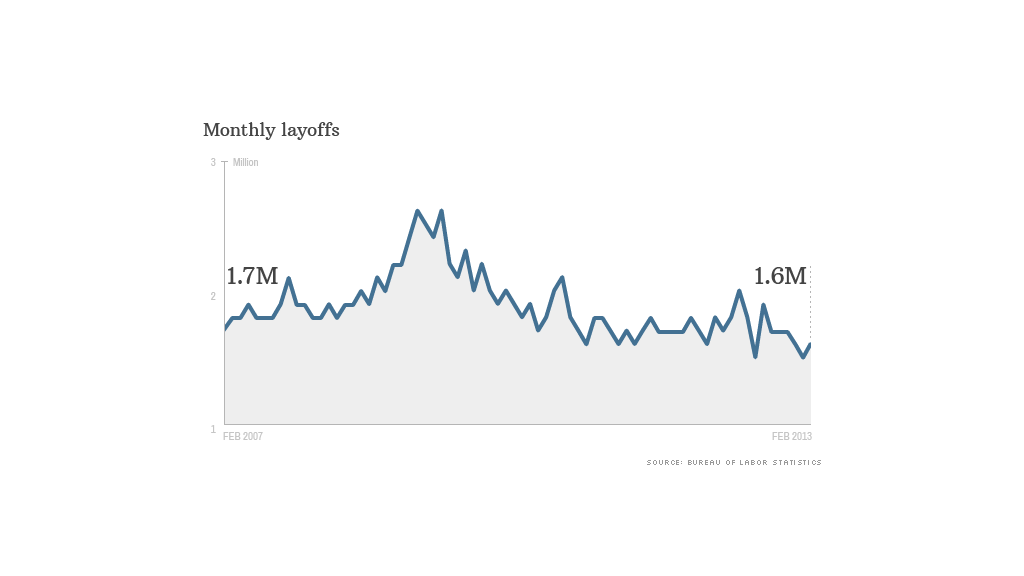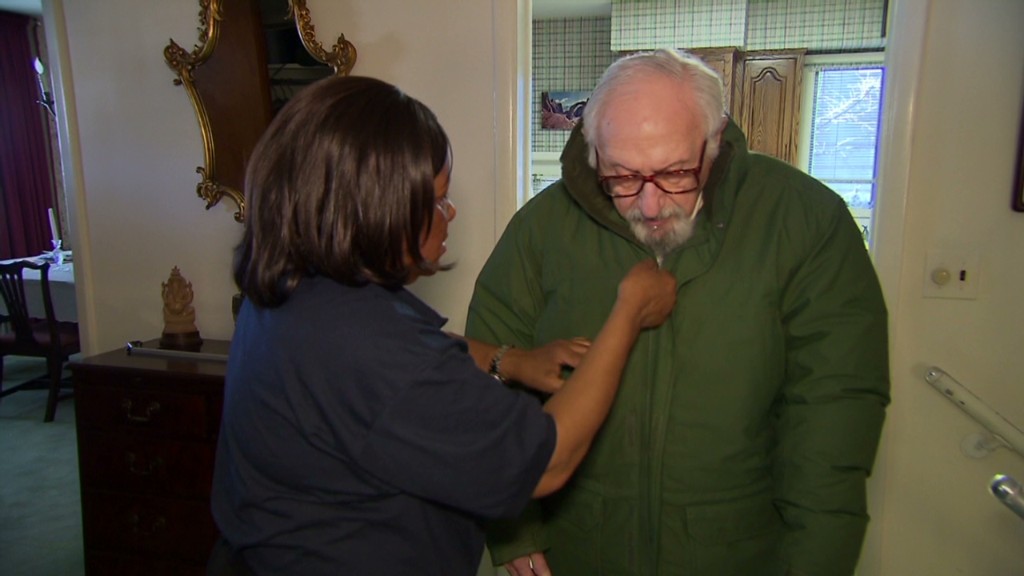
Far fewer Americans are getting fired or laid off these days than they were in 2009. In fact, layoffs are back at their pre-recession lows.
That said, new hiring remains weak.
Put the two trends together, and what does it all mean? Firms are holding on to their current workers but still don't seem ready to add to their ranks substantially.
"People are waiting for these companies to be stupid by hiring more people than they need. They're not going to do that," said Tom Gimbel, chief executive and founder of the LaSalle Network, a Chicago-based staffing firm.
"They're making money. Profits can be up, the stock market is up, and unfortunately, companies don't need to hire huge amounts of more people to keep doing that," he added.
Related: For every job opening, there are 3 unemployed Americans
Consider the job market before the recession officially began.
In 2007, it was normal for U.S. employers to hire roughly 5 million new people each month. On the flip side, they would typically lay off another 2 million workers. Meanwhile, another 3 million people would voluntarily quit their jobs, and about 365,000 would leave due to retirement, disability or death.
This churn is normal, even in the healthiest of job markets.
But now there are fewer layoffs, retirements and people quitting than there were back then, which means more people are staying at their jobs.
"People aren't leaving jobs unless they have another one lined up," said Robert Brusca, economist with FAO Research.
Making matters worse for job seekers, employers have been only hiring an average of 4.3 million new workers each month over the past year. That's still far below the 5.2 million they used to hire each month in 2007. Gains in productivity may help explain why companies are unwilling to add many more employees.
Meanwhile, the population has grown. In order for the unemployment rate to come down significantly, improvement in the job market needs to come from more new hires -- not just fewer layoffs.
"Firms are hanging on to labor, but they don't really want to expand," Brusca said.
The Federal Reserve wants the unemployment rate to fall below 6.5% before it will be ready to raise interest rates. The Fed doesn't expect that to happen until 2015.
Related: Federal Reserve sees slow recovery for years to come
Fed officials have recently clarified that they're closely watching other jobs metrics too. The unemployment rate alone can be a problematic indicator because it can fall for negative reasons.
Such was the case in March, when the unemployment rate fell to 7.6%, as roughly 500,000 people stopped looking for jobs.

Fed vice chair Janet Yellen, who is second in command to Ben Bernanke, has said she's closely watching the number of new hires as a key gauge of the labor market's health.
"Layoffs and discharges as a share of total employment have already returned to their pre-recession level, while the hiring rate remains depressed," Yellen said in a speech last month. "Therefore, going forward, I would look for an increase in the rate of hiring."
New hires made up only about 3.3% of all jobs in February. That rate has barely changed over the past two years.
Back in 2006 and 2007, it hovered around 4%.


